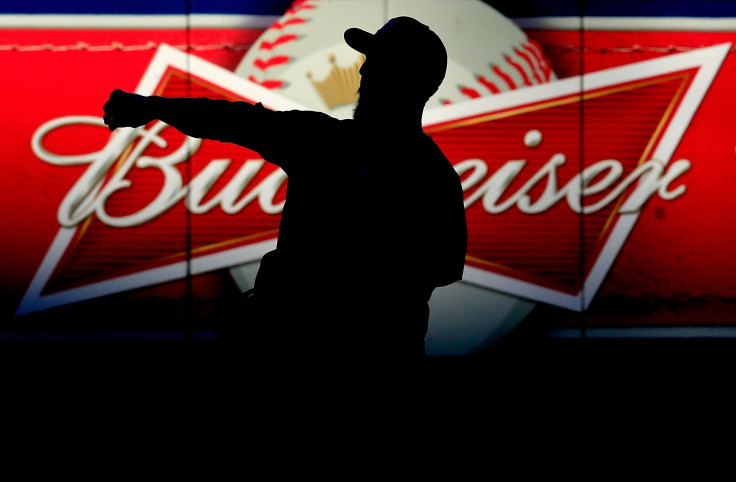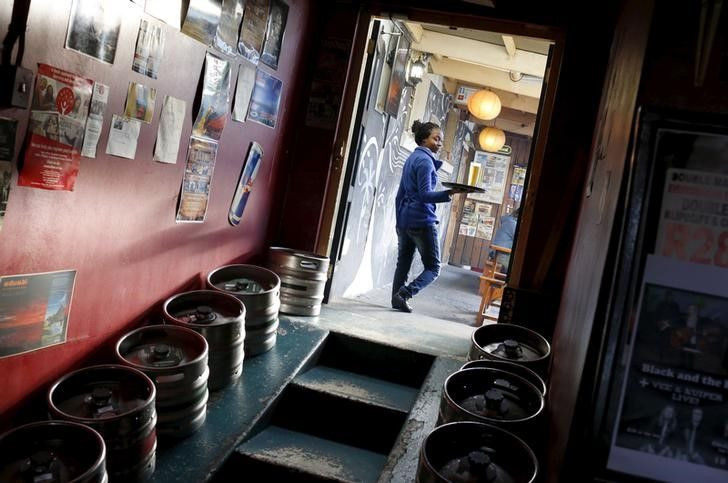Anheuser-Busch InBev Merger With SABMiller: Beer Behemoth Would Be A TV Sports Advertising Titan

Americans watch more live sports than any other kind of television. They also drink more beer than any other kind of alcoholic beverage. Consequently, beer sellers and sports broadcasters have had one of the longest marriages in advertising history.
With Anheuser-Busch InBev announcing Wednesday its intention to shell out $108 billion for British beer conglomerate SABMiller, television advertising could soon become a lot more homogenized. The resulting brew-hemoth would control 30 percent of the world’s beer supply. The deal still has to pass regulatory muster in huge countries like the U.S., China and India but is expected to close in 2016 if it does.
Theoretically, such a juggernaut should have TV ad sellers a little nervous about a potential loss of leverage, even if consensus is that live sports audiences are simply too big for any advertiser to ignore.
But TV insiders say the mega-company wouldn't cause too much disruption thanks to a merger condition stipulating that SABMiller would have to shed its stake in MillerCoors, thereby leaving Molson Coors the sole owner of the popular Coors brand.
That would be a big relief for sellers: AB InBev, formed in 2008 when Belgian brewer InBev bought Anheuser-Busch for $52 billion, spent $541 million on TV ads in 2014, according to data from Kantar Media; MillerCoors spent $417 million. Combined, AB InBev, SABMiller's American holdings and Molson Coors account for about 75 percent to 80 percent of all advertising dollars in the beer and ale category, says Jon Swallen, Kantar Media's chief research officer. By way of comparison, last year's total TV ad pie was $77 billion.
Even if one or more of the big U.S. brands had been subsumed by AB InBev, Swallen said there wouldn't have been much cause for concern, as companies from other sectors, like automotive and financial services advertisers, would likely have swooped in to pick up anything those brands left on the table.

Security Of Sponsorships
Sponsorship deals are another reason for the “All Quiet on the Beverage Front” vibe, particularly among sports sellers. Sponsorships offer a modicum of security and stability because they tend to be locked in for several years.
"If Anheuser-Busch, as the new controlling company, had kept the SABMiller U.S. brands, the likely scenario," Swallen said, "would have them reviewing all of the sports sponsorship deals at SABMiller brands, deciding whether the sponsorships were in those brands' best interest, and deciding whether some of those sponsorships needed to be dropped or folded into other deals created for Anheuser and Michelob brands."
But in early November, AB InBev extended Bud Light’s NFL sponsorship through 2022, and its sponsorships of most other major leagues are similarly longer-term commitments. "It would have taken a while for us to see any kind of real decline in sponsorship money from them," Swallen added. Instead, AB InBev is even predicting a “mid to high single-digits” percentage increase in sales and marketing spend for the rest of 2015, per its third-quarter earnings release.
For regular spots in sports telecasts, the majority of advertisers have been making deals with sportscasters for decades. In 1979, Anheuser-Busch inked the biggest ad contract in cable history with ESPN, for $1.38 million -- an amount that today would buy only three 30-second spots on ESPN’s “Monday Night Football” games. Many of the most steadfast ad relationships were forged in the days of the Great Beer Wars of previous decades, when the concept of exclusivity was all the rage, and brewers paid exorbitant fees to be the sole hops-slinger on air during games.
It’s a different landscape now, sources say, given that brands like Bud Light and Coors Light are some of the most recognizable in America -- everyone is more willing to play [and pay]. The exception, of course, is Budweiser’s continued status as the Super Bowl’s only national beer advertiser.
“There’s enough inventory for everyone,” Swallen said.
© Copyright IBTimes 2024. All rights reserved.





















